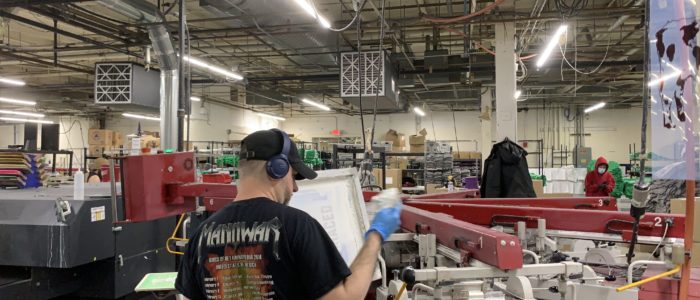As we head into 2024, it’s the perfect time to get your business organized and equipped with the right tools. With the help of some industry experts, including Kevin Oakley, Davis Slagle, and Jonathan Ornelas, we put together “A Guide to Print Shop Scaling and Hiring.”
This free download is a comprehensive guide on print shop hiring and scaling with strategies to ensure it’s profitable and fits your shop’s goals, size, and budget. Scroll below for a look at what you’ll get in the guide.
Ready to get started now? Download your free copy here.
About our Contributors:
Davis Slagle from BeeGraphix is a big proponent of strategic scaling, and BeeGraphix has seen some exciting growth in recent years. Combining the power of direct-to-film transfers and online stores, they’ve been able to corner a growing demand for this customization method.
Jonathan Ornelas from Success Print Shop has had some exciting growth, and we’ve been chatting with him from the start. More recently, he was able to successfully scale his business so he could step away from production and focus more on running the business.
Stoked on Printing’s Kevin Oakley has taken his business from a 1,400-square-foot studio to a 15,000-square-foot facility with 50 employees, using strategic scaling practices and Inktavo tools.
Starting Out: Staffing Below $100,000 in Sales
Staffing in the early phases can take on a few different forms, including the following employee types:
- Contract
- Hourly
- Salary Interns
“We’ve always done hourly from the start,” says Jonathan Ornelas from Success Print Shop. “I can imagine a larger shop hiring for a manager role would start with salaried.”
If you’re looking for help to cover some seasonal rushes, hourly or contract can be an easier option since it’s aimed at short-term employees versus someone you’re planning to hire for the long term.
“At the beginning, there might not be a whole lot of work, so bringing in people temporarily when volume spikes happen is a great way to get it moving,” says Kevin Oakley from Stoked on Printing. “Once we’ve built that department up, we have a supervisor and staff underneath them.”
Ultimately, it comes down to determining if your current process is working. If things are breaking down, whether that’s your team unable to keep up with building orders or staff working overtime more than usual, that’s usually a sign it’s time to bring in some additional help.
“If our in-house staff is falling behind their orders more than 2-3 days, that’s when we start looking to hire more help,” says Davis Slagle from BeeGraphix.
Davis also points out that if you’ve got the capability, outsourcing higher-volume, time-consuming jobs can help stay on top of volume. For example, if you know your shop is stronger at cranking out three-color screen printing jobs but not staffed for high-volume embroidery, consider partnering with a contractor who can handle the work. You can factor in the contracting for the final order price.
Hiring Temporary Help: Interns, Family, and Friends
It can be tempting to bring on friends and family to fill some of those immediate staffing needs, but proceed with caution. The consensus from the shop owners we talked to is that if you have a clear picture of that person’s work ethic and an idea of their work history that reflects they are reliable and up to the task, then it’s a little less of a gamble.
Even still, hiring friends and family can get tricky when you need to make difficult decisions if you need to downsize (not ideal, but let’s face it, things can change) or coach employees because of waning performance.
Davis says interns can be a great option if you need someone to fill some temporary gaps. Assigning them to tasks that free up some of your more skilled employees can help speed up your overall production and ordering process.
“We have our interns work in every department, so they understand the entire process for a day, at least,” says Davis. “We also provide them training guides on how to achieve what they need to do, like building social ads.”
You can tap into interns and temporary workers by connecting with places like local temp agencies, colleges (for interns), or other groups like placement agencies that help veterans find work in their area.
Want more tips on scaling above $100,000 in sales and beyond? Download A Guide to Print Shop Scaling and Hiring here.



Comments are closed.